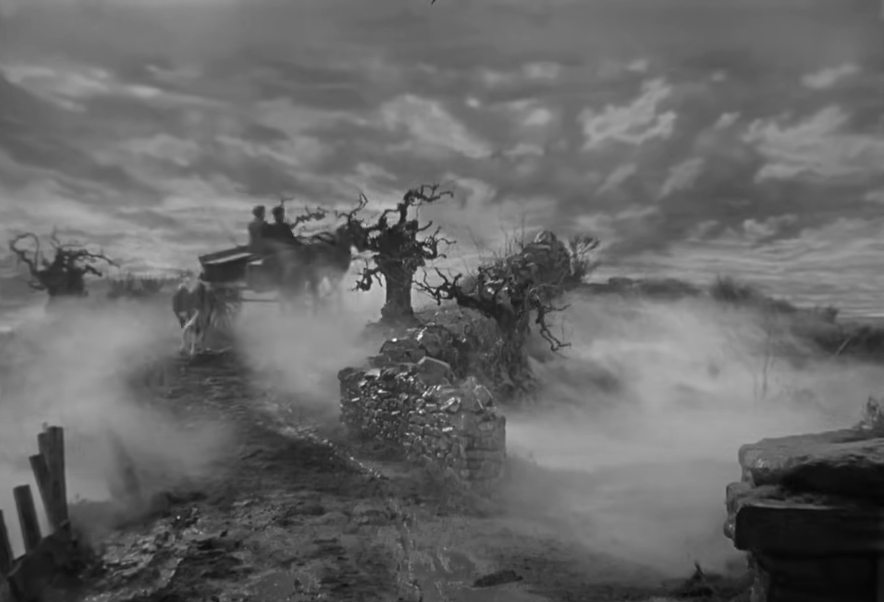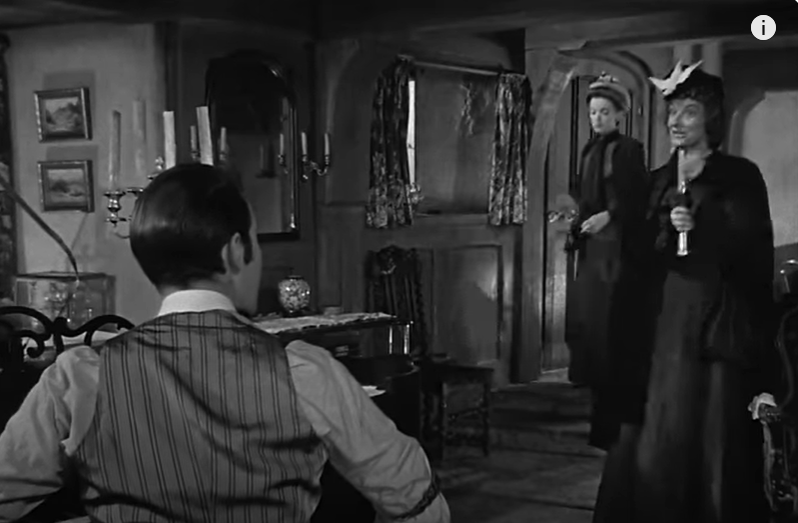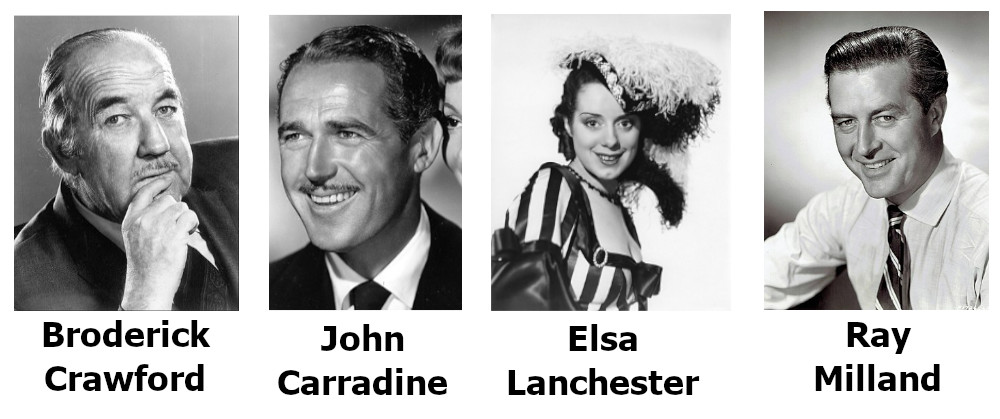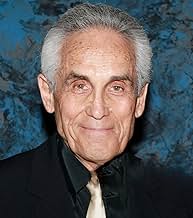
So what can an author learn from watching ladies in retirement? Let’s look at the atmosphere.

Atmosphere: There are great shots that give a very gothic atmosphere, including the horse and cart ride, as well as the layout of the mansion house Leonora and Ellen live in. New authors can slide into the ‘white room syndrome’ from forgetting about giving the characters a stage and a background. This is a great movie to steal a few stills from and write up the descriptions. This exercise will build a roster of backdrops and stages in your imagination.
Scenery/Set Descriptions: You can tell that each shot in this movie was set up and framed by the director because each scene filled up the entire shot. Unlike many modern movies that go from one closeup to the next, this movie shows the actors acting across a room, interacting with each other, each one hitting their marks and interacting with props. It can help any new writer learn about giving the characters movement within the scene at the same time they are delivering their lines and moving the action forward.
Costuming/Historical Anchoring: The next area for writers to focus on is costuming and how the film was anchored in time. This particular film was anchored ‘in the olden days’ but there was not one specific time period mentioned. The long dresses, bun hairstyles, Fiona’s shawl, and the nephew’s clothing and manners were enough to anchor this film in a generic ‘olden times’. It’s important for a new author to recognize that this anchoring takes place in every scene. There are props and backdrops in every scene that are keeping this a period piece. This is important to learn for writing in general.
Acting/Character Development: The acting was very good and I go into it in a bit more detail in the video below, but the actress who stole the show was Isobel Elsom playing Lonora Fiche. From head to toe, she acted this part and she was so enjoyable.
One writer's lesson from this movie would be how the character of Leonora was made up of her costuming, her movements, her dialogue, the hairstyle, the singing, the bossing of the servants, flirting with the young nephew, the glasses – she used everything from head to toe for this character development. Now, this character may have been this great in the script, but I never saw the actual script. I just know that the actress did an amazing job at creating a fully fleshed out character for this film noir. And when you focus on her actual dialogue, it wasn't enough to create the character that she developed.

The one area that I think was lacking in the movie was the characterizations of the two sisters. The script referred to them as unsettled, but it was unclear as to whether they were just high management or had mental issues.
I know Elsa Lanchester, who played one of the sisters, is a great actress, and she could have made the character so much better, so I'm sure it wasn't an acting issue. It could have been a directorial flaw, or maybe they were limited by the time of the entire movie and decided to clip the sisters’ characters.
But as a novel writer, I saw great potential for two more great characters in the sisters. We are not limited for time the way a scriptwriter is, so the two sisters could have been fully developed and they would have enriched the story even more.



 here are many great sets where the action takes place in this movie. A good writing exercise would be to choose one of them and describe it in one paragraph. See how much information you can get into that amount of space.
here are many great sets where the action takes place in this movie. A good writing exercise would be to choose one of them and describe it in one paragraph. See how much information you can get into that amount of space. The movie starred Ida Lupino, who played the starring role as Ellen Creed. She was an English actress born in 1918 but made most of her movies in the United States. As a point of interest, she came from two generations of theater people, but she did start her own production company in the midst of the Hollywood Studio system. That was pretty daring in those years for a woman if you ask me.
The movie starred Ida Lupino, who played the starring role as Ellen Creed. She was an English actress born in 1918 but made most of her movies in the United States. As a point of interest, she came from two generations of theater people, but she did start her own production company in the midst of the Hollywood Studio system. That was pretty daring in those years for a woman if you ask me.

 As the story opens, we learn that Ellen Creeds' family falls on hard times and she winds up being a handmaiden of sorts to this ex-chorus girl Leonora Fiske who now owns their family home. Ellen has been reduced to a common servant. (Regina on screen)
As the story opens, we learn that Ellen Creeds' family falls on hard times and she winds up being a handmaiden of sorts to this ex-chorus girl Leonora Fiske who now owns their family home. Ellen has been reduced to a common servant. (Regina on screen)



 This movie is a good study in the difference between scriptwriting and novel writing. For example: The singer in the movie doesn't really move the mystery along at all. She is there for sheer entertainment which every movie needs. She plays off of the businessman and there is a tiny subplot about how Karkov the creature fancies her and protects her in one scene. But her entire appearance in the movie could be handled with two lines of background information in a novel.
This movie is a good study in the difference between scriptwriting and novel writing. For example: The singer in the movie doesn't really move the mystery along at all. She is there for sheer entertainment which every movie needs. She plays off of the businessman and there is a tiny subplot about how Karkov the creature fancies her and protects her in one scene. But her entire appearance in the movie could be handled with two lines of background information in a novel. The actor who played Karkov was amazing. His character was a mute but he acted with grunts and used his whole body for his portrayal of the wax museum creature. He did an amazing job.
The actor who played Karkov was amazing. His character was a mute but he acted with grunts and used his whole body for his portrayal of the wax museum creature. He did an amazing job.